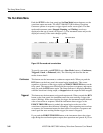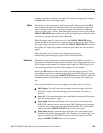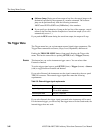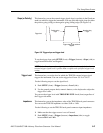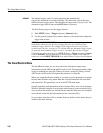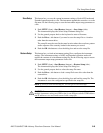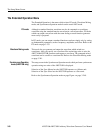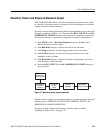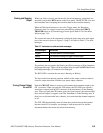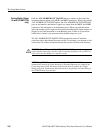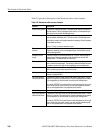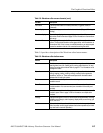
The Setup Menu Screen
3-52 AWG710&AWG710B Arbitrary Waveform Generator User Manual
Automatic Reloading of
Output Files
A file that has been loaded and that is being output will be reloaded when one of
the following conditions is met:
The waveform or pattern file is modified with the editor. (Auto or Manual
mode in the Settings bottom menu).
The file is changed with Copy or Rename by operating the front–panel, GPIB
or Ethernet control.
Changes are made to a sequence file.
A file is received from GPIB or Ethernet and changes are made to the file.
Auto–reload occurs when changes are made to a file. The file length may change
due to Cut or Paste or because it is subjected to Copy as a thoroughly different file.
If so, auto–reload will fail and the output file will be named NULL.
Waveform Files and
Sample Clock Rates
Waveform and pattern files contain the clock attribute values appended. If you
specify a waveform or pattern file as the output file, the clock value will be loaded
from the file and set.
If you specify a sequence file for the output file, the clock specified in the first file
in the sequence list sets the instrument clock rate.
If you load the file as the output file when the following two conditions are met,
the waveform in the edit buffer will be loaded:
You have performed a edit session before loading the output file (while the
output file name is NULL).
You have made changes to the waveform data and/or clock attributes whether
the file has been saved or not.
Regarding the clock attributes, the values specified in the edit will be loaded.
If the output with the editor is in the Auto mode, reload takes place each time
changes are made to the edit buffer. The clock attributes are not updated at this
time.
When the file is first loaded, the clock attributes are set. Clock changes made with
the menu take higher priority over those that are made with the editor by means of
the auto–update of the output.



